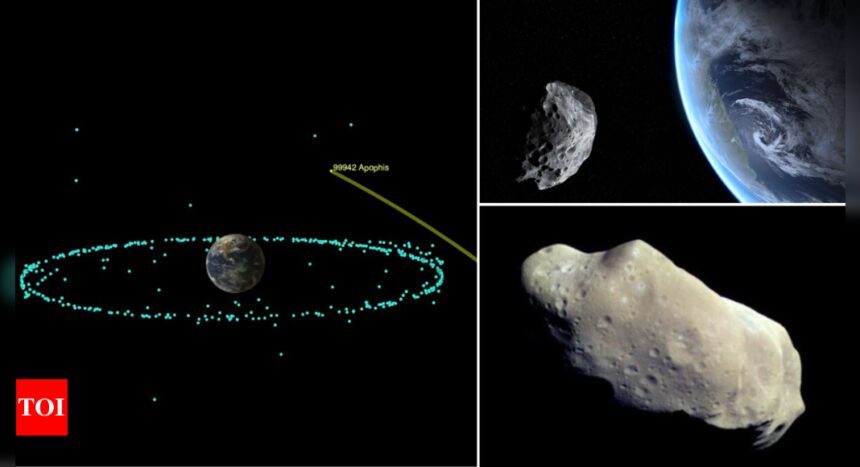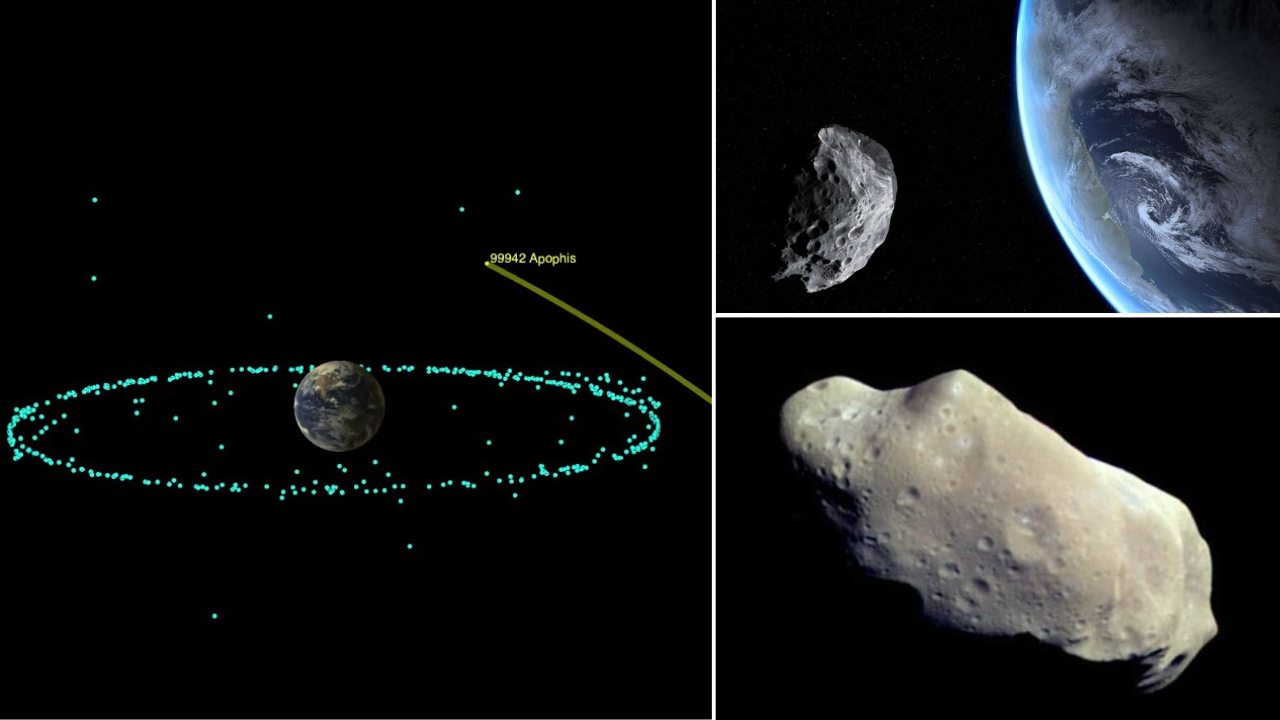Apophis: From cosmic threat to scientific marvel
Discovered in 2004 by astronomers at Kitt Peak National Observatory, Apophis quickly rose to notoriety.With a diameter of approximately 1,100 feet (335 meters), it was initially deemed one of the most dangerous near-Earth objects. The asteroid was predicted to come perilously close to Earth in 2029, sparking fears of a potential collision. This forecast, however, has been revised as astronomers tracked Apophis with increasing precision.
The breakthrough came in March 2021. Using the Goldstone Deep Space Communications Complex and the Green Bank Telescope, scientists gathered high-resolution radar data that allowed them to accurately map Apophis’s orbit.
The science behind the spectacle
Apophis, classified as an S-type asteroid, is composed of silicate materials mixed with nickel and iron. Its shape, resembling a “peanut,” adds to the intrigue. Scientists are keen to understand its rotation and structural dynamics, including its potential for “asteroid quakes” due to gravitational interactions.
The 2029 flyby: A cosmic spectacle
On April 13, 2029, Apophis will pass within 20,000 miles (32,000 kilometers) of Earth’s surface—closer than the geostationary satellites that orbit the planet. This close approach will offer a rare, unfiltered view of the asteroid for those in the Eastern Hemisphere. “Although Apophis made a recent close approach with Earth, it was still nearly 10.6 million miles away,” explained JPL scientist Marina Brozovic. “We were able to acquire incredibly precise information about its distance, setting up a wonderful science opportunity.”
Why is everyone talking about it now?
The recent surge in attention is largely due to reports of Nasa broadcasting a live feed of Apophis, offering a rare glimpse at an asteroid of this magnitude as it hurls through space. However, this claim is incorrect.
Although NASA and other astronomers are actively monitoring Apophis due to its close approach to Earth in 2029, there is no continuous live feed dedicated to tracking the asteroid.
The potential changes in its trajectory can be tracked on Nasa’s official website.
Animation of Asteroid Apophis’ 2029 Close Approach with Earth
Could the ‘god of chaos’ change its path?
Experts, however, are reassuring the public that despite the asteroid’s nickname, the chances of a collision remain incredibly slim — at least this time around.
“Apophis is not on a direct collision course with Earth in 2029,” said Dr Sarah Thompson, a leading astrophysicist at Nasa, according to media reports. “But we’re watching closely, as space objects can have unpredictable behavior over time.”
“It’s a one-in-a-million shot, but it’s there,” Dr Thompson added. “We’re using every resource we have to calculate its movements and ensure we’re not taken by surprise.”
However, Davide Farnocchia of Nasa’s Center for Near-Earth Object Studies, said the extensive analysis confirmed that the asteroid poses no threat for at least the next century. “A 2068 impact is not in the realm of possibility anymore,” said Farnocchia.
What happens if it hits?
As per media reports, if Apophis were to ever strike Earth, the results would be catastrophic. An impact from an asteroid of this size would release energy equivalent to over 1,200 megatons of TNT—enough to flatten entire cities. The event would have both local and global effects, from tsunamis to severe atmospheric disruptions.
OSIRIS-APEX: Nasa’s spacecraft to study the asteroid
In anticipation of this close encounter, Nasa has repurposed its OSIRIS-REx spacecraft, now dubbed OSIRIS-APEX, for a detailed study of Apophis. After successfully completing its mission to collect samples from asteroid Bennu in 2023, OSIRIS-APEX will fly by Apophis on April 23, 2029, and then conduct an 18-month investigation. The spacecraft will map Apophis’s surface, analyze its composition, and observe any changes triggered by the flyby.
A cosmic relic
Formed over 4.6 billion years ago, Apophis is a remnant from the early solar system. Its journey from the main asteroid belt to its current near-Earth orbit was shaped by planetary forces, particularly Jupiter’s gravity.
What’s in a name?
Named after the ancient Egyptian demon of chaos, Apophis continues to captivate scientists and the public alike. As we prepare for the asteroid’s close approach, it reminds us of the dynamic and often unpredictable nature of our solar system.
Source : Times of India









